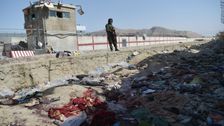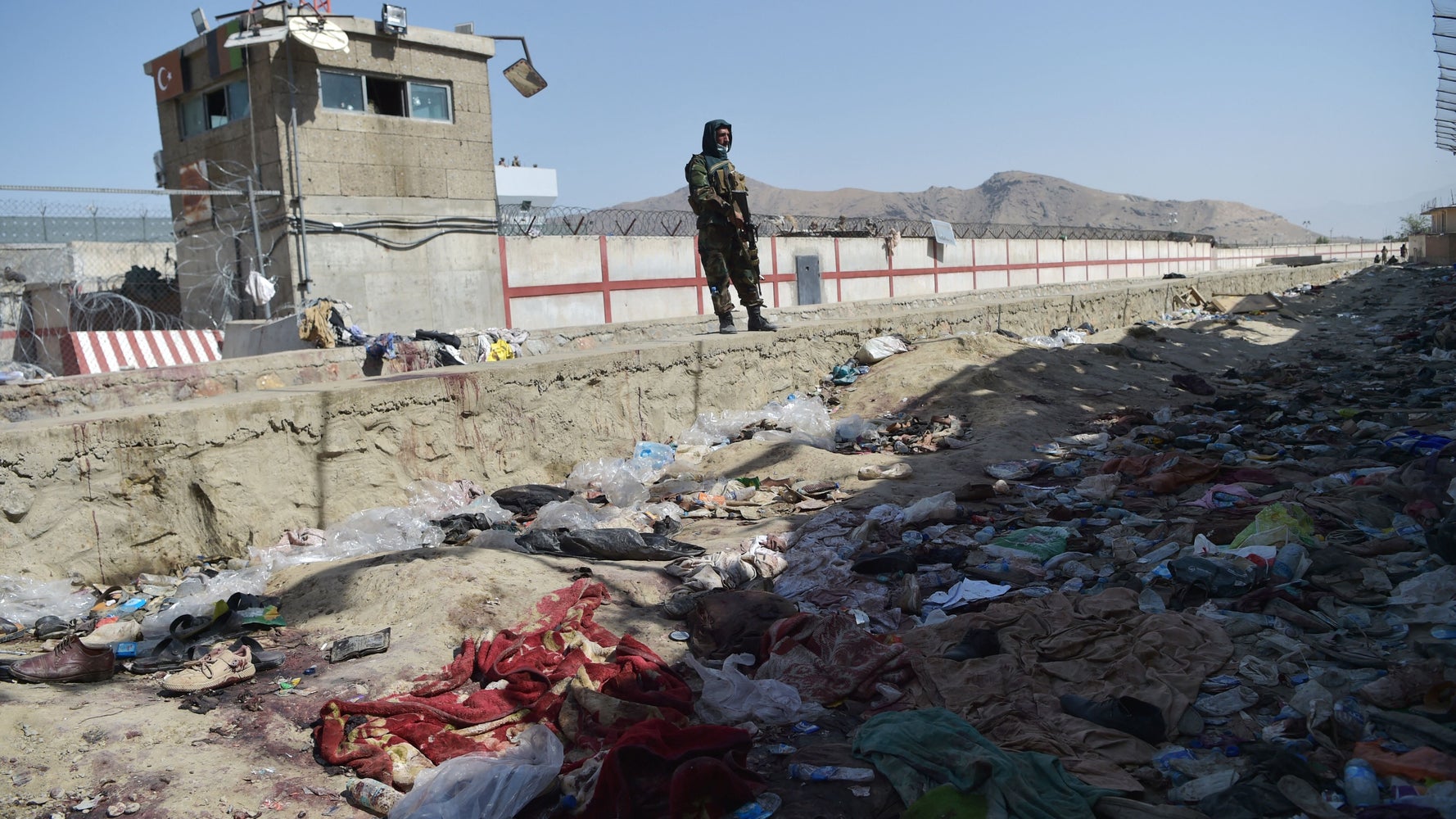

WASHINGTON (AP) — Acting swiftly on President ’s promise to retaliate for the deadly suicide bombing at Kabul airport, the U.S. military said it used a drone strike to kill a member of the Islamic State group’s Afghanistan affiliate Saturday.
The strike came amid what the White House called indications that IS planned to strike again as the U.S.-led evacuation from Kabul airport moved into its final days. Biden has set Tuesday as his deadline for completing the exit.
Biden authorized the drone strike and it was ordered by Defense Secretary Lloyd Austin, a defense official said, speaking on condition of anonymity to provide details not yet publicly announced.
The airstrike was launched from beyond Afghanistan less than 48 hours after the devastating Kabul attack that killed 13 Americans and scores of Afghans with just days left in a final U.S. withdrawal after 20 years of war. U.S. Central Command provided few details; it said it believed its strike killed no civilians.
The speed with which the U.S. military retaliated reflected its close monitoring of IS and years of experience in targeting extremists in remote parts of the world. But it also shows the limits of U.S. power to eliminate extremist threats, which some believe will have more freedom of movement in Afghanistan now that the Taliban is in power.
Central Command said the drone strike was conducted in Nangahar province against an IS member believed to be involved in planning attacks against the United States in Kabul. The strike killed one individual, spokesman Navy Capt. William Urban said.
It wasn’t clear if the targeted individual was involved directly in the Thursday suicide blast outside the gates of the Kabul airport, where crowds of Afghans were desperately trying to get in as part of the ongoing evacuation.
The airstrike came after Biden declared Thursday that perpetrators of the attack would not be able to hide. “We will hunt you down and make you pay,” he said. Pentagon leaders told reporters Friday that they were prepared for whatever retaliatory action the president ordered.
“We have options there right now,” said Maj. Gen. Hank Taylor of the Pentagon’s Joint Staff.
The president was warned Friday to expect another lethal attack in the closing days of a frantic U.S.-led evacuation. White House press secretary Jen Psaki said Biden’s national security team offered a grim outlook.
“They advised the president and vice president that another terror attack in Kabul is likely, but that they are taking maximum force protection measures at the Kabul airport,” Psaki said, echoing what the Pentagon has been saying since the bombing Thursday at Kabul airport.
Late Friday, the State Department again urged Americans to stay away from airport gates, including “the New Ministry of Interior gate.”
Few new details about the airport attack emerged a day later, but the Pentagon corrected its initial report that there had been suicide bombings at two locations. It said there was just one — at or near the Abbey Gate — followed by gunfire. The initial report of a second bombing at the nearby Baron Hotel proved to be false, said Maj. Gen. Hank Taylor of the Pentagon’s Joint Staff; he attributed the mistake to initial confusion.
Based on a preliminary assessment, U.S. officials believe the suicide vest used in the attack, which killed at least 169 Afghans in addition to the 13 Americans, carried about 25 pounds of explosives and was loaded with shrapnel, a U.S. official said Friday. A suicide bomb typically carries five to 10 pounds of explosives, said the official, who spoke on condition of anonymity to discuss preliminary assessments of the bombing.
Biden still faces the problem over the longer term of containing an array of potential extremist threats based in Afghanistan, which will be harder with fewer U.S. intelligence assets and no military presence in the nation.
Emily Harding, a former CIA analyst and deputy staff director for the Senate Intelligence Committee, said she doubted Biden’s assurances that the United States will be able to monitor and strike terror threats from beyond Afghanistan’s borders. The Pentagon also insists this so-called “over the horizon” capability, which includes surveillance and strike aircraft based in the Persian Gulf area, will be effective.
In an Oval Office appearance Friday, Biden again expressed his condolences to victims of the attack. The return home of U.S. military members’ remains in coming days will provide painful and poignant reminders not just of the devastation at the Kabul airport but also of the costly way the war is ending. More than 2,400 U.S. service members died in the war and tens of thousands were injured over the past two decades.
The Marine Corps said 11 of the 13 Americans killed were Marines. One was a Navy sailor and one an Army soldier. Their names have not been released pending notification of their families, a sometimes-lengthy process that Pentagon spokesman John Kirby said involves “difficult conversations.”
Still, sorrowful were starting to emerge. One Marine from Wyoming was on his first tour in Afghanistan and his wife is expecting a baby in three weeks; another was a 20-year-old man from Missouri whose father was devastated by the loss. A third, a 20-year-old from Texas, had joined the armed services out of high school.
Biden ordered U.S. flags to half-staff across the country in honor of the 13.
They were the first U.S. service members killed in Afghanistan since February 2020, the month the Trump administration struck an agreement with the Taliban that called for the militant group to halt attacks on Americans in exchange for a U.S. agreement to remove all American troops and contractors by May 2021. Biden announced in April that he would have all forces out by September.
Psaki said the next few days of the mission to evacuate Americans and others, including vulnerable Afghans fleeing Taliban rule, “will be the most dangerous period to date.”
The White House said that as of Friday morning, in the last 24 hours on U.S. and coalition aircraft; in the 12 hours that followed, another 4,200 people were evacuated. Psaki said about 300 Americans had departed and the State Department was working with about 500 more who want to leave. to push on and complete the airlift despite the terror threats.
Kirby told reporters the U.S. military is monitoring credible, specific Islamic State threats “in real time.”
“We certainly are prepared and would expect future attempts,” Kirby said. He declined to describe details of any additional security measures being taken, including those implemented by the Taliban, around the airport gates and perimeter. He said there were fewer people in and around the gates Friday.
-—
Associated Press writers Aamer Madhani, Darlene Superville and Nomaan Merchant in Washington contributed to this report.
Calling all HuffPost superfans!
Sign up for membership to become a founding member and help shape HuffPost’s next chapter



